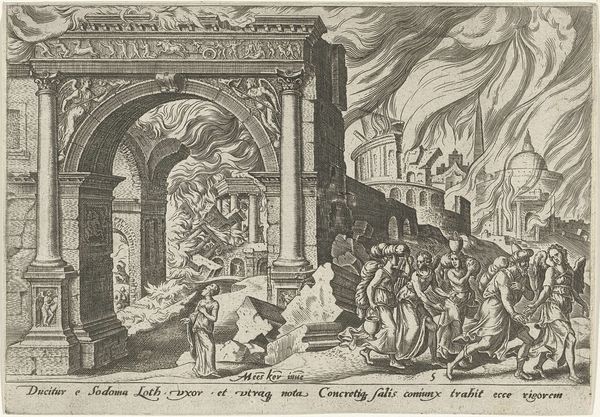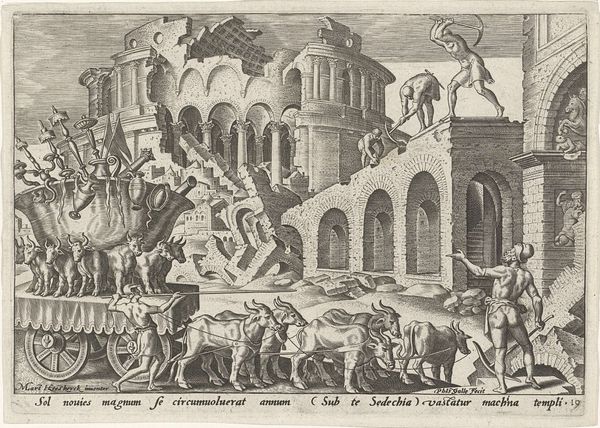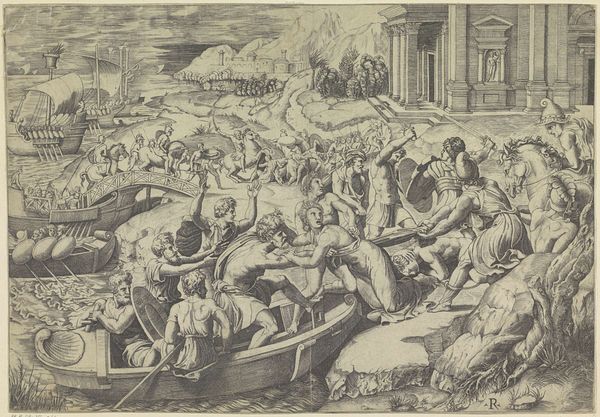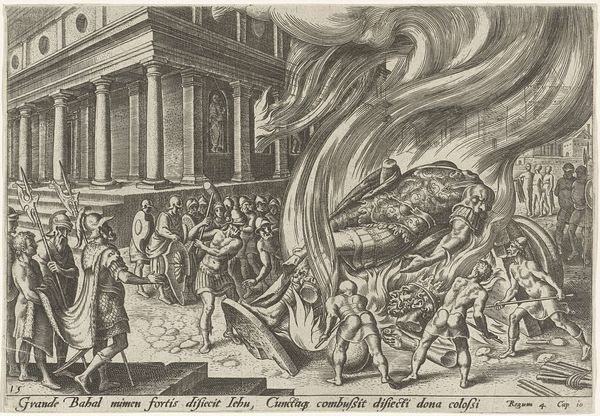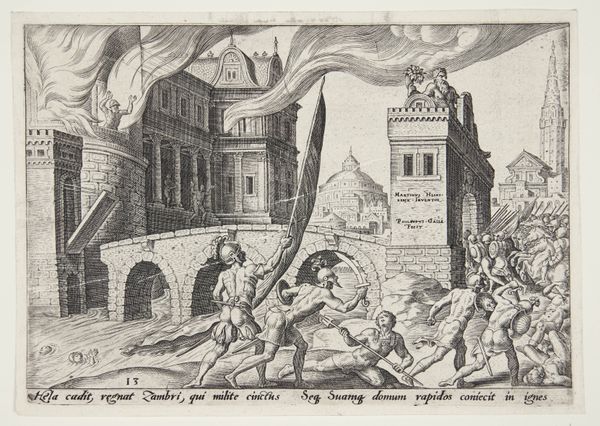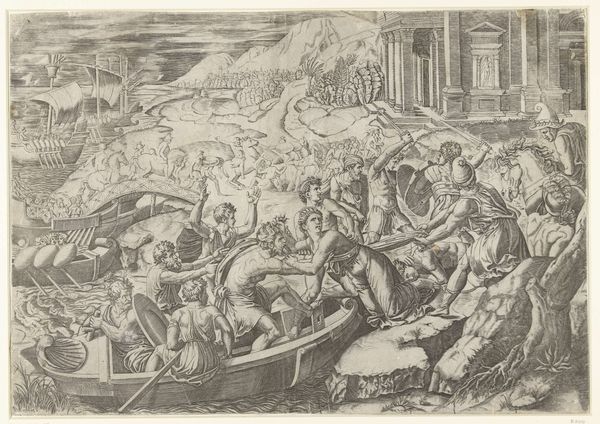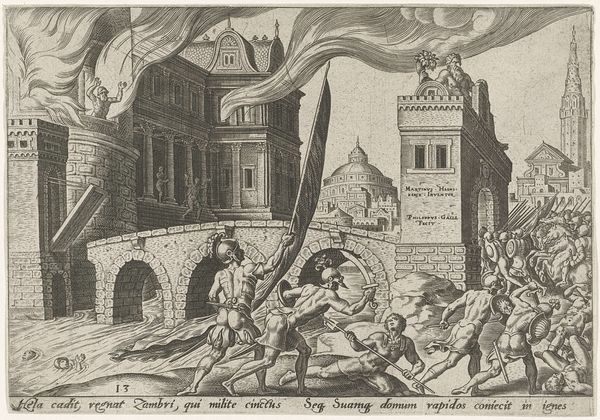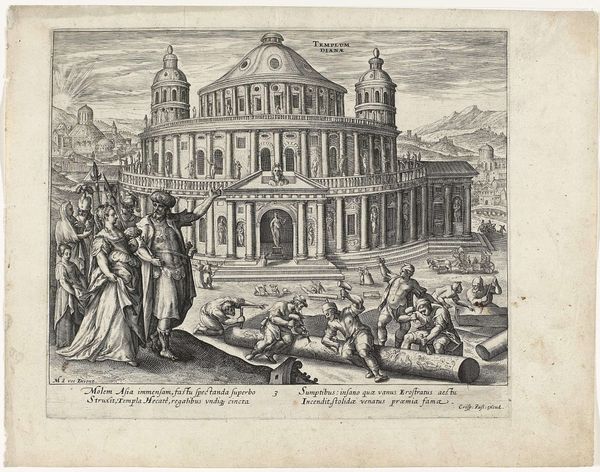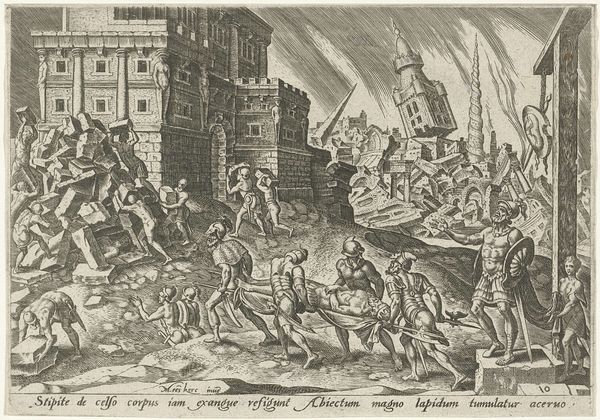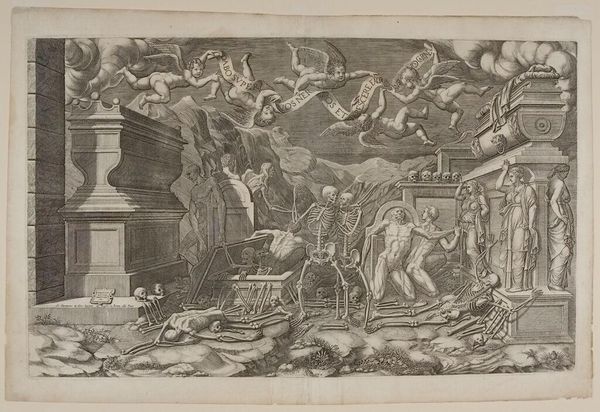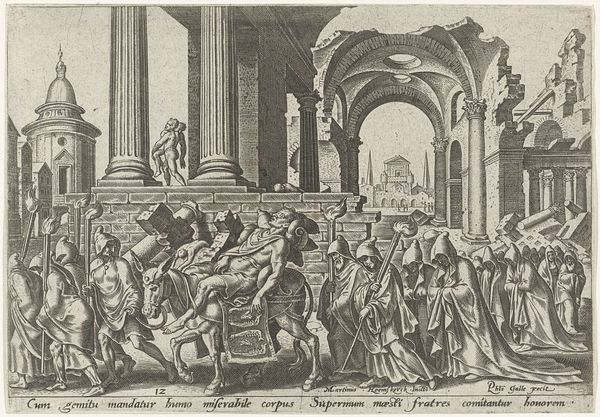
Dimensions: height 140 mm, width 201 mm
Copyright: Rijks Museum: Open Domain
Editor: So, here we have "The Destruction of Jerusalem by Emperor Titus," a 1569 engraving by Philips Galle, housed here at the Rijksmuseum. It's a pretty stark image. What I find most striking is how meticulously detailed it is, especially considering the subject matter is utter devastation. What do you see in this piece? Curator: I see the labor invested in creating this narrative. Think about the process of engraving – the skilled artisan meticulously carving lines into a metal plate, a craft learned through years of apprenticeship. Galle wasn’t just depicting destruction; he was performing skilled labor within a very specific socio-economic context of print production and distribution. The final artwork as such is a precious metal-originated artwork, whose consumption allows us to comprehend a great deal of socio-economic dynamics. Editor: So, it's about the physical making, rather than just the image itself? I guess I was drawn in by the scene depicted – all the chaos and drama. Curator: Precisely! But what does that "chaos" actually consist of? Notice how Galle has organized the composition, dividing it through orthogonals: on one side, the imperial forces, active in destruction, on the other, the doomed architectural mass. I’m curious; to whom would this type of scene appeal to the most? Who would spend a great deal of currency on such representation? Editor: Presumably, patrons, religious leaders. Those seeking propaganda in favour of the Roman Empire or perhaps a warning about the ephemerality of power? Curator: Exactly. The act of creating and consuming art is always embedded within power structures. In its materiality the artwork speaks on behalf of labour, production, context and power relations. Editor: I see your point. By considering the means of production, we uncover deeper layers of meaning beyond the surface image. It makes you think about who had access to art like this and the messages they were meant to receive. Curator: And that's the key - to unearth not just *what* is shown, but *how* it was made, and for *whom*. A profound way to contextualize artwork like this!
Comments
No comments
Be the first to comment and join the conversation on the ultimate creative platform.
